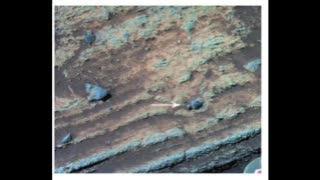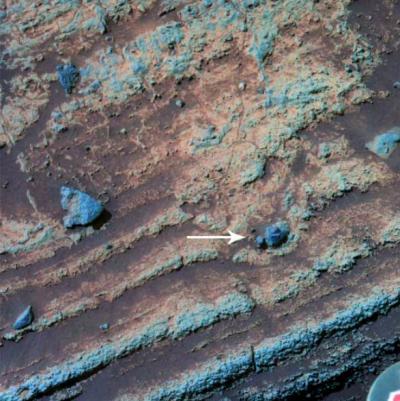Dufek and his team then went to the lab to create bomb sags of their own. They created beds of sand using grains the same size as those observed by Spirit. The team propelled particles of varying materials (glass, rock and steel) at different speeds into dry, damp and saturated sand beds before comparing the divots with the bomb sag on Mars. No matter the type of particle, the saturated beds consistently produced impact craters similar in shape to the Martian bomb sag.
By varying the propulsion speeds, Dufek's team also determined that the lab particles must hit the sand at a speed of less than 40 meters per second to create similar penetration depths. In order for something to move through Mars' atmosphere at that peak velocity, the pressure would have to be a minimum of 20 times more dense than current conditions, which suggests that early Mars must have had a thicker atmosphere. Click here for a video demonstration.
"Our study is consistent with growing research that early Mars was at least a transiently watery world with a much denser atmosphere than we see today," said Dufek. "We were only able to study one bomb sag at one location on the Red Planet. We hope to do future tests on other samples based on observations by the next rover, Curiosity."
Curiosity is scheduled to land on Mars on August 5.

Georgia Tech assistant professor Josef Dufek created bomb sags in his lab by propelling particles into sand beds. The demonstration is used to study a sag on the Martian surface, created when a volcano erupted nearly 3.5 billion years ago. The study provides more evidence of water on early Mars.
(Photo Credit: Georgia Institute of Technology)

This bomb sag on the surface of Mars was created during a volcanic blast approximately 3.5 billion years ago. Assistant professor Josef Dufek has replicated the sag in his lab while studying the possibility of water and atmospheric conditions of early Mars.
(Photo Credit: NASA/JPL)
Source: Georgia Institute of Technology